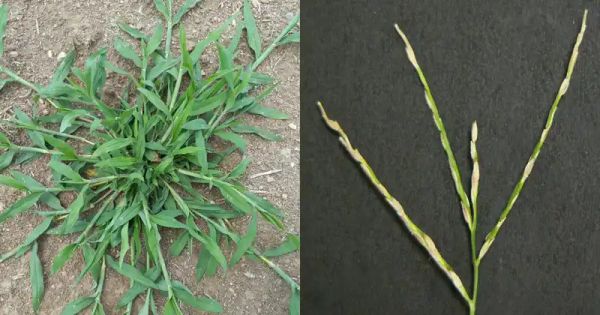Crabgrass, known scientifically as Digitaria sanguinalis, is often seen as an annoying weed that invades backyards, fields, and urban areas. While many gardeners try to get rid of crabgrass, this resilient plant actually has a lot to offer in terms of health benefits. Despite its reputation as an unwelcome intruder, crabgrass has numerous therapeutic properties, ranging from reducing inflammation to improving digestion and kidney health.
In this article, we will explore the surprising health benefits of crabgrass and how you can incorporate this misunderstood plant into your wellness routine. And if you’re also interested in managing crabgrass growth in your garden, we’ve got effective methods that won’t harm your lawn.
What is Crabgrass?
Crabgrass is a tough plant that thrives in various environments, from neglected patches of lawn to roadside ditches. Despite being considered invasive, this plant has been used in traditional medicine for centuries. Its leaves, stems, and roots contain compounds that provide health benefits, such as detoxification, digestive support, and relief from inflammation.
Health Benefits of Crabgrass
-
Reduces Inflammation: Crabgrass has natural anti-inflammatory compounds that can help soothe various conditions, including joint pain, arthritis, and muscle soreness. Drinking crabgrass tea, made from its leaves and stems, can also alleviate inflammation in the throat and respiratory system, providing relief for sore throats and body aches.
-
Supports Kidney Health: Crabgrass acts as a natural diuretic, increasing urine production and helping the body flush out toxins. This can be especially beneficial for individuals with kidney issues or water retention, as it supports healthy kidney function and a well-regulated urinary system.
-
Improves Digestion: Crabgrass has long been used to support digestive health. It helps alleviate bloating, indigestion, and mild stomach discomfort. Additionally, crabgrass tea acts as a gentle laxative, promoting regular bowel movements and maintaining a balanced digestive system.
-
Soothes Skin Irritations: When used externally, crabgrass can be turned into a poultice and applied to minor skin irritations, insect bites, and rashes. Its natural anti-inflammatory and antibacterial properties help soothe the skin, reduce redness, and promote healing for minor cuts and scrapes.
-
Supports Respiratory Health: Crabgrass has been included in traditional remedies for respiratory issues. Drinking crabgrass tea can help clear the respiratory tract, making it easier to breathe during colds, mild respiratory infections, or congestion.
-
Manages Fever: Crabgrass tea is known for its cooling properties, which can help reduce fever symptoms. The tea can lower body temperature, providing relief during times of fever and aiding in quicker recovery from infections.
-
Rich in Antioxidants: Crabgrass contains antioxidants that protect the body from free radicals and oxidative stress. These antioxidants contribute to overall health by reducing the risk of chronic conditions such as heart disease and cancer.
-
Regulates Blood Sugar: Crabgrass may play a role in managing blood sugar levels. Consuming crabgrass tea can help regulate glucose levels, making it beneficial for individuals with diabetes or those looking to maintain stable blood sugar levels.
-
Boosts the Immune System: The antioxidants and beneficial compounds in crabgrass help strengthen the immune system. Regular consumption of crabgrass tea may provide additional protection against common infections by supporting your body’s natural defenses.
-
Promotes Cardiovascular Health: Crabgrass can have calming effects on the cardiovascular system, aiding in the relaxation of blood vessels and promoting healthy blood pressure levels. Drinking crabgrass tea regularly may contribute to better circulation and heart health.
-
Supports Detoxification: As a natural detoxifier, crabgrass helps the body eliminate toxins through increased urine production and enhanced liver and kidney function. Regular consumption of crabgrass tea can assist in cleansing your body from the inside out.
How to Use Crabgrass for Health Benefits
Internal Use: To address internal ailments such as inflammation, digestion, or fever, you can make a tea using crabgrass. Simply boil a handful of fresh crabgrass leaves and stems in half a liter of water for 5 minutes. Strain and enjoy a cup of the tea once or twice a day to experience its health benefits.
External Use: For skin irritations or minor wounds, crush fresh crabgrass leaves and apply them directly to the affected area as a poultice. The anti-inflammatory and soothing properties of crabgrass will help reduce irritation and promote healing.
Embrace Crabgrass as a Natural Healer
Despite being seen as a troublesome weed, crabgrass has significant potential as a natural remedy. Whether you’re seeking relief from digestive issues, inflammation, or skin problems, crabgrass offers a range of health benefits that are worth exploring. Instead of simply getting rid of it, consider how you can incorporate this humble plant into your daily wellness routine.

And if you’re looking to manage crabgrass while still enjoying its health benefits, check out our guide on “how to control crabgrass without damaging your lawn” for effective and eco-friendly solutions.





